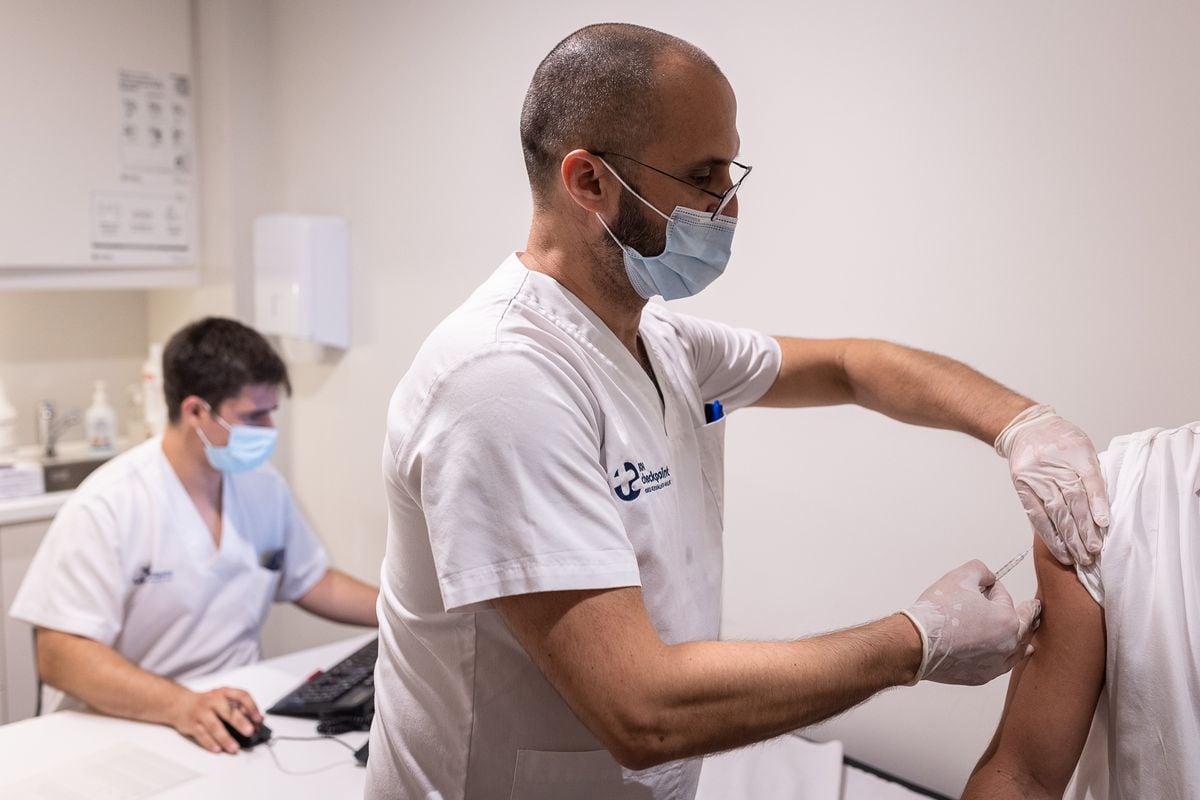Health workers treat a patient with coronavirus in the ICU of the Hospital Cosaga de Ourense on February 19.Brais Lorenzo / EFE
Note to readers: EL PAÍS
openly
offers
essential information on
the coronavirus during the crisis.
If you want to support our journalism,
subscribe here
.
Spain abandons the situation of extreme risk due to coronavirus.
The epidemic curve continues downward and the accumulated incidence at 14 days stands at 235 cases per 100,000 inhabitants, below the threshold of 250 that, according to the Ministry of Health, placed the country in a maximum alert scenario that prevented the maintenance of lines the pandemic.
However, the drip of cases does not stop and Health has notified this Tuesday 7,461 new infections and 443 deaths in the last 24 hours.
In fact, there is still a danger that the contagion curve will spiral out of control: health authorities estimate that in order to leave the risk zone, the cumulative incidence cannot exceed 50 cases per 100,000 inhabitants.
These are the new restrictions by autonomous communities
Eleven communities are outside the extreme risk levels: Extremadura, in fact, has overtaken the Canary Islands, the community least affected by the third wave, in this reduction in transmission and places its cumulative incidence at less than 100 cases per 100,000 inhabitants ( specifically, at 96).
On the other side of the scale are Melilla and Madrid: the autonomous city registers an incidence of 434 and Madrid, which has been one of the communities with the most flexible restrictions during the scourge of the third wave, adds 362 cases per 100,000 inhabitants.
The numbers of the pandemic improve, but Spain is not out of danger.
According to the traffic light approved by the Government and the communities last October to measure the risk of covid transmission, the country's epidemic curve shows the first sign of relief by falling below 250 cases per 100,000 inhabitants, but Spain remains at high risk ( between 150 and 200 cases per 100,000).
In fact, healthcare pressure in intensive care units (ICU) continues to skyrocket with 3,365 critically ill patients due to covid.
That is, 31.5% of ICU beds are occupied by coronavirus patients.
According to the Health traffic light, more than 20% of ICU places occupied by people with covid also means a situation of extreme risk.
In addition, deaths from covid have not stopped and February is about to become the month with the most deaths registered since the first wave.
In April, about 15,500 deaths were reported and in November, the peak of the second wave, 9,191.
So far in February, deaths from covid are close to 9,000.
In the last seven days, 871 have been reported.
The most favorable indicators are in the positivity of the diagnostic tests, which stands at 7.6%.
The scientific community recommends that this parameter be below 5% to start controlling the transmission of the virus and, although there are territories above 10% (such as Ceuta, Melilla, Aragón and the Valencian Community), positivity in Spain continues to decline and is now at a medium risk threshold, according to Health.
The good trend of the epidemic curve also confirms the effectiveness of the harsh social restrictions imposed, to a greater or lesser extent, by the autonomous communities.
The Government, in fact, has asked not to lower its guard and maintain the limitations, although some communities have already advanced in their particular de-escalation.
As of Friday, for example, Galicia will allow meetings of up to four people between non-cohabitants and will slightly open the hotel business.
The Valencian Community, for its part, is also evaluating lifting the perimeter closures on weekends from March.
Catalonia, on the other hand, has seen a brake in the reduction of its infections and has chosen to slow down its de-escalation.
“Despite the good trend in this third wave, we insist on precautionary measures.
Until we achieve that 70% of the population is immunized, we cannot begin to relax these measures, ”said the Minister, spokesperson for the Government, María Jesús Montero, after the Council of Ministers.
The forecast of the central Executive is that in summer that 70% of the vaccinated population will be reached, a goal that the President of the Government, Pedro Sánchez, reiterated this Tuesday during his appearance in the Senate.



/cloudfront-eu-central-1.images.arcpublishing.com/prisa/LXJQLIHEEJDHBNVN45ZLQLAMJY.jpg)











/cloudfront-eu-central-1.images.arcpublishing.com/prisa/IGZ7GOCXZ5GUPAQ2HWGK6Z76BU.jpg)